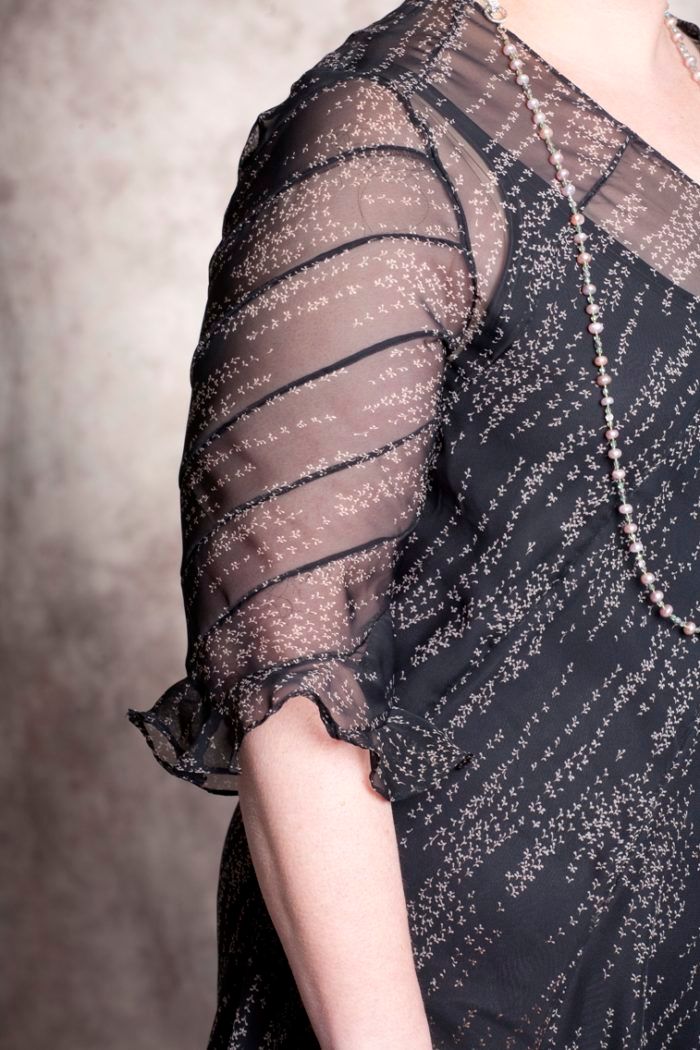
Denise Severson's bias swirl sleeve.
I promised to share more techniques for creating sleeves that fit a larger biceps from Denise Severson. Denise, an alterations expert and Association of Sewing and Design Professionals member, wrote an article on the topic, “Bye Bye, Biceps Blues” in Threads no. 155.
Denise has a delicious dress in black. It’s a bias-cut confection, with “swirled” sleeves. The sleeves are cut and seamed on the straight, but worn in the bias. She made this dress originally for the ASDP/Threads Fluid Fabric Challenge in 2008. The pieced fabric strips form a sleeve “tube.” The strips and seams wrap around the arm, a delightful effect in sheer fabrics. You would use this technique after you’ve made the basic pattern alteration for larger biceps, outlined in the print article.
The Bias-Swirl Sleeve  Denise in her bias swirl dress, made in printed black chiffon.
Denise in her bias swirl dress, made in printed black chiffon.
1 Cut eight fabric strips. Each sleeve requires four. (The sections are illustrated in different colors for clarity.) Note: Readers have asked about the precise measurements. Well, there is some experimentation to perfect this technique! The strips’ length and width are interdependent, because the strips spiral diagonally around the sleeve. Try paper first to get a feel for the technique, and Denise recommends guinea-pigging with scrap fabric to test length, width, and seam allowances.

2 Arrange the fabric sections for piecing. Each section is “dropped” by one fabric strip width, for a “stair-step” block. Drop the sections from upper left to lower right. The seam stops at the hem seam allowance of the left-most pattern piece.

3 Sew the sections together. For sheers, use a French or wrapped French seam; otherwise, baste, then serge to finish and trim the excess seam allowance. Continue the seam finish through each strip’s curved end to hem the sleeve.
4 Close the sleeve tube with a spiral twist. You are going to twist the pieced fabric to continue the stair-step piecing progression. In the photographed example, the green strip (the lowest “step” on the right) is turned to become the top “step,” extended one strip width above the pink strip’s top (at the left). Aligned along the long edges, all of the strips spiral into a tube. If the “steps” are not of matching heights, the spiral tube may be distorted. Be patient, pin frequently and baste to double check the seam placement. It is easier to pull out basting to reposition the seam than to rip out a seam.

5 Prepare to cut the sleeve from the pieced fabric tube. Determine the length you want for the finished sleeve, and mark this on your altered basic sleeve pattern. Lay the sleeve tube flat. One fold is the vertical over-arm center and the other fold is the under-arm center.

6 Align the pattern on the fabric. Place your altered sleeve pattern’s center grain line along one sleeve tube fold. Pin it in place, with the pattern’s marked finished length aligned with the sleeve’s hemmed edge. Add a notch at the sleeve cap’s shoulder point and at the under-arm point to help set the sleeve tube in the garment. Cut out the sleeve from the pieced fabric tube.



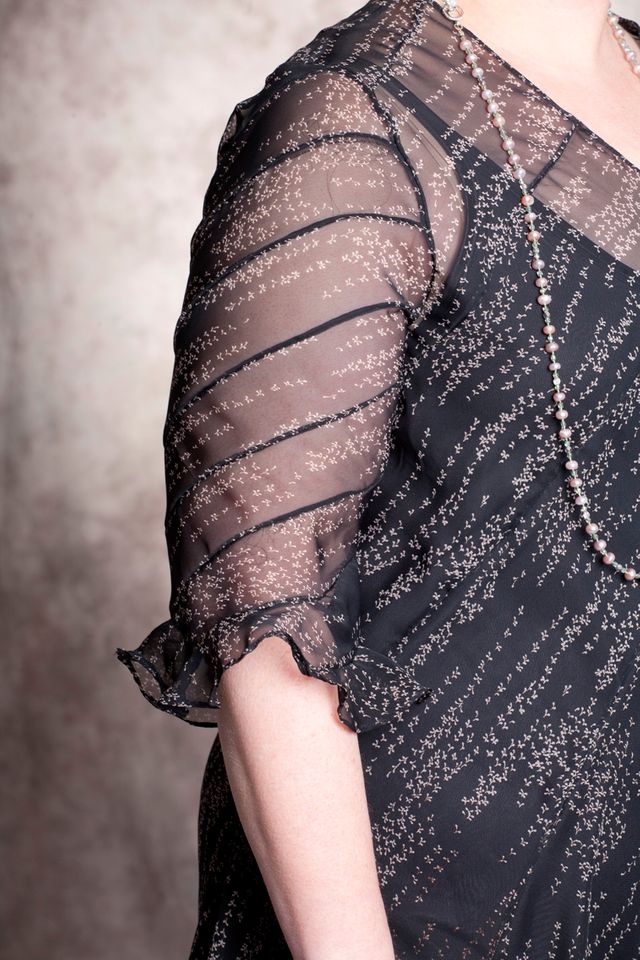

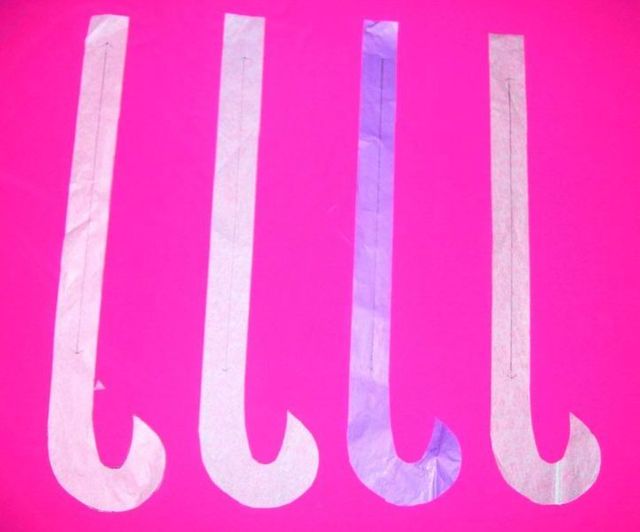
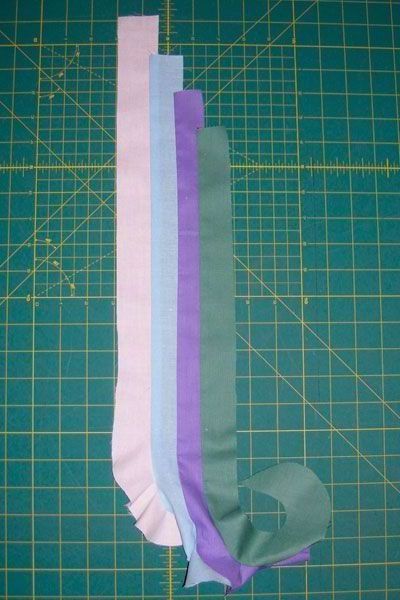
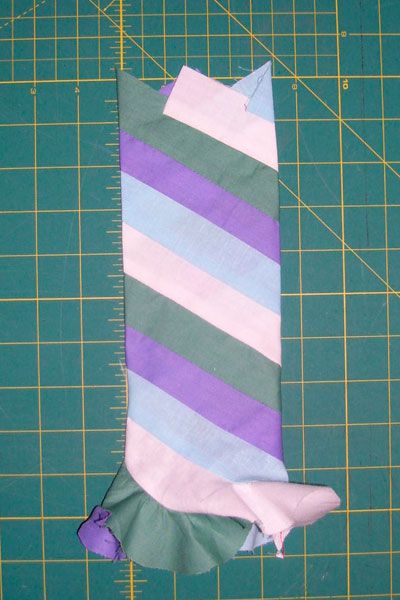
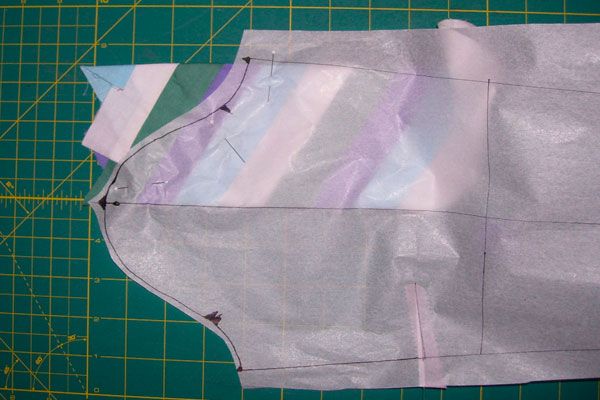
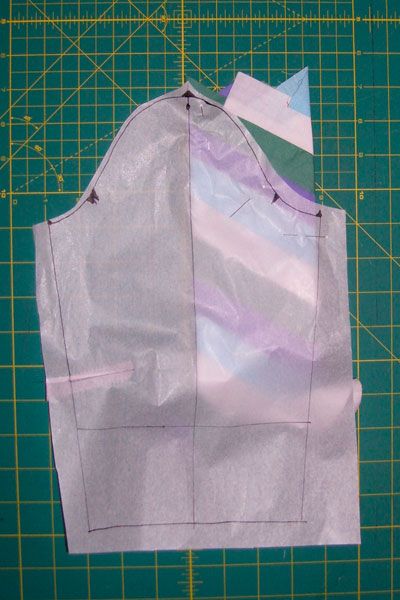
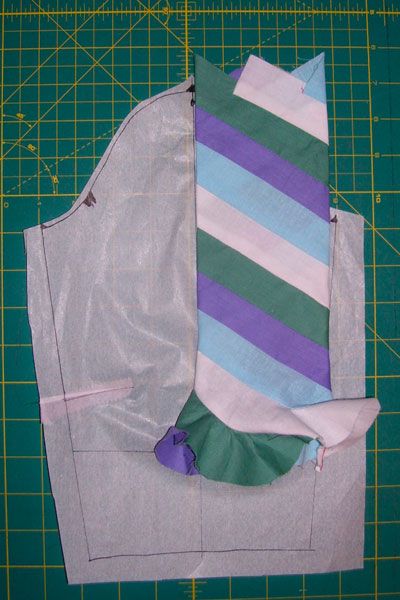
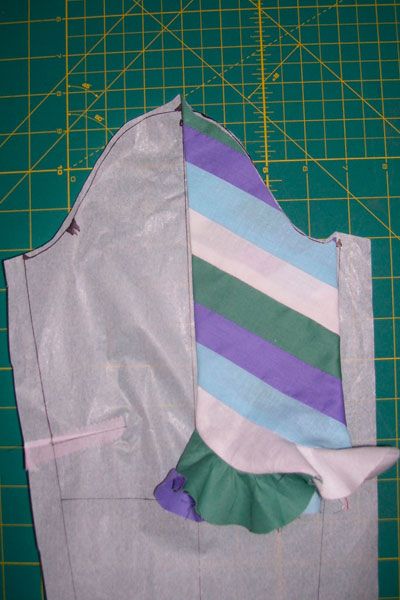


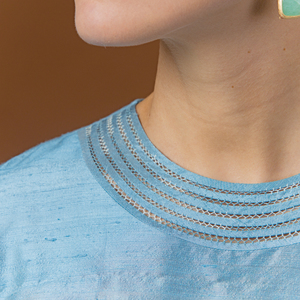

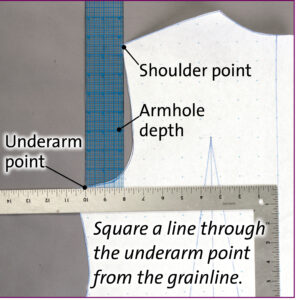

























Is there a step missing here? I don't quite get how to "close the fabric tube"...maybe the author has left something out?
I think when Sarah says "Twist the pieced fabric to continue the dropped piecing progression." it means to coil the pieced strip into a tube, like wrapping it around your arm, and then pin the long, continuous seam and sew it. It would be like wrapping a ribbon around your arm and seaming the edges together to form a tube.
Love the look and a great idea, but some step IS missing, I thinnk Rabia & Cfiedes are on the money, when I followed after the seaming together, I missed the turn.
How do you make sure the tube is wide enough for your arm?
I agree that a step (or more) is missing. How wide should each strip be? How long should it be (for different sleeve lengths)?
I've made a swirl skirt before, so I think I can imagine how the "tube" is formed, but if one wants to try this sleeve idea, a little more information about strip width, and length is needed...unless of course, one wants to just keep experimenting until one gets the size and length they need................
Love the idea though!
I like this idea, my friend gave me a blouse, but the biceps or should I say my biceps are bigger than the sleeve circumference. I've been looking for a way to re-vamp them.
thanx again.
This is such a great idea but please could we have a few more detailed steps in the "how to"?
Hello! I've contacted Denise, the author, to figure out how best to clarify the instructions. The steps are all there, but I can see now that more detail would make the technique easier to follow. I'll post another comment after the post is updated. - Sarah
Hi again - I was able to add more detail about planning and creating the spiral in the sleeve. Denise plans a few additional images to cover the confusing part - we'll add those soon. Thanks!
My head is spinning! I'd also appreciate further clarification. I do like how the sleeve ends in the bias ruffle.
This is beautiful! Great idea, even for sprucing up sleeves for skinny arms like mine. Now I need to "find a reason" to use this technique.
I keep coming back to this and did get out my Issue #155 but am still waiting on "more details"!
Trying to figure out how I can "subscribe" to this topic so I won't miss any additional information?
Have to look it up on Goog;e every time.
I love the sleeve on this dress. It is quite lovely. I’m sorry but
I don’t understand step 5. Where would you cut your tube open? This will go in my sewing bucket list. Thank you so much for posting this new idea. J Lynn